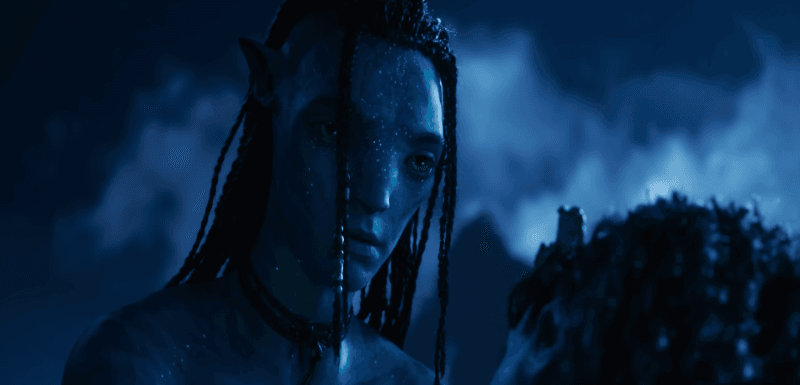
A Behind-the-Scenes Look at Chungkang College's Student Animations
Top News
animation works
In this interview, Fox Renderfarm connects with the winners of the 2024 CKAS (Chungkang Animation Showcase). The three student teams behind AWAKE, Fairy of Shampoo, and Golden Memories from Chungkang College of Cultural Industries share their journey from concept to completion. Along the way, they reflect on their creative processes, challenges, and the role Fox Renderfarm played in bringing their

Sony Pictures Releases Full Short of 'The Spider Within: A Spider-Verse Story'
Trending
animation works
After the release of "Spider-Man: Across the Spider-Verse" last year, the young superhero Miles Morales once again appeared in the public eye and the film received widespread acclaim. Miles becoming a superhero as a teenager is something very cool in the eyes of his peers. As a young Spider-Man, does he have other worries besides fighting evil? In reality, he does, but they may be shown less in th

Animation Trends of 2024: The Rise of 3D and Hybrid Techniques
Trending
cloud rendering
As we navigate through 2024, the art of animation continues to undergo transformative changes, driven by technological advancements and shifting audience preferences. We're observing significant shifts in animation trends 2024, with creativity being pushed to new heights.One of the key animation trends of 2024 is the increasingly widespread use of 3D animation. Previously a novel concept, 3D anima

3D Animation Impact Mints Limited Edition Cricket Made by CGKatha Studios
Trending
animation works
CGKatha Studios has created a stunning 3D animation for Impact Mints to show cricket enthusiasts the limited edition cricket themed mints. According to CGKatha Studios, the animation was created entirely in Blender and they chose Fox Renderfarm as the high-speed cloud rendering solution. Without excellent work from each team, it is impossible to turn this concept into reality.Check out the Impact

Peeling Back Layers: Exclusive Interview with 3D Young Minds Behind Animation Short "Veggie Go Round"
Trending
Fox Renderfarm Interview
Veggie Go Round is a collaborative animated short film created by an Illustration and Digital Animation student team - Salad Bowl Studios, for their final year graduation project at The One Academy. It’s an action-packed comedy about a young boy who imagines the veggies on his plate as live monsters, merrily inspired by the universal childhood experience of growing up as a picky eater.Watch Veggie

C’Atelier, Stunning 3D Animation Produced by Leonstudio
Trending
animation works
Leonstudio has shared their latest animation project, C'Atelier, which was produced completely by themselves. In the animation, they mixed their two favorite styles, character animation with a bit of stop motion look and photoreal jewelry.C'Atelier was created by Leonstudio from look dev to production, including production design, technical direction and simulation, modeling, rigging, animation, l

Fiery, a CGI Fantasy Made by Kay John Yim
Trending
animation works
Kay John Yim, an architect by day, CGI artist by night, again created an amazing CGI animation, Fiery, which is the September featured entry in our FGT Art Campaign.In John's Fiery, adorned in a fiery kimono, Kitsune and her feline companion journey through the ethereal realm beyond the torii gate, where they discover a radiant landscape of vibrant Ginkgo trees, and their path softly illuminated b

The Making of “Metamorphosis”, A 40-Second Slow Motion CGI Animation Created by Kay John Yim
Trending
animation works
The making of “Metamorphosis” was wrote by Kay John Yim, who is an architect by day, CGI artist by night. As an architect, although he is busy with his daily work, he always carries his passion for CG and insists on self-learning in his free time, which leads to the creation of many wonderful CG artworks.Kay John YimChartered Architect & CGI ArtistKay John Yim's personal site: http

Corridor Digital Drops VFX Reveal of Anime Rock, Paper, Scissors
Trending
animation works
"Rock, Paper, Scissors" is a very interesting anime produced by the Corridor team based on AI. The anime tells the story of twin brothers fighting for control of the kingdom through a game of Rock, Paper, Scissors. You may laugh due to the twin brothers' actions and mental activities.Watch the "Anime Rock, Paper, Scissors":The Corridor team has shared the VFX reveal of this short animation, and af

O Primeiro Episódio da Série em 3D 'Vamos Brincar com a Turma da Mônica' Está Disponível no YouTube
Fox Renderfarm Interview
animation works
Turma da Mônica, a série amada pelo povo brasileiro, já é parte da cultura brasileira, e ninguém desde crianças até adultos não conhece a adorável Mônica e seus amigos.Vamos Brincar com a Turma da Mônica é a primeira série de desenho animado em 3D da Turma da Mônica, e é produzida por Mauricio de Sousa Produções (MSP), com animação da Hype Animation e sonorização da Ultrassom Music Ideas.© Maurici

The First Episode of 3D CG Series 'Let's Play with Monica and Friends’ Available on YouTube
Trending
animation works
Monica and Friends (Turma da Mônica), a series beloved by the Brazilian people, is already a part of Brazilian culture, and no one from children to adults doesn't know the lovely Monica and her friends.Let's Play with Monica and Friends (Vamos Brincar com a Turma da Mônica) is the first 3D cartoon series of Monica and Friends, produced by Mauricio de Sousa Produções (MSP), with animation by Hype A

Watch This Short to Celebrate Diwali Festival with Mickey!
Trending
CG
Disney Junior released a "Me &x26; Mickey" short to celebrate the Indian festival, Diwali.Image via Disney Junior"Me &x26; Mickey" is a series of vlog-style video shorts launched by Disney Junior, starring Mickey Mouse, who invites preschoolers to laugh and play together about familiar everyday topics in their lives, as well as engage in small games and challenges.In this short , Mickey shares wit











